Mount Fuji: Beyond Peak
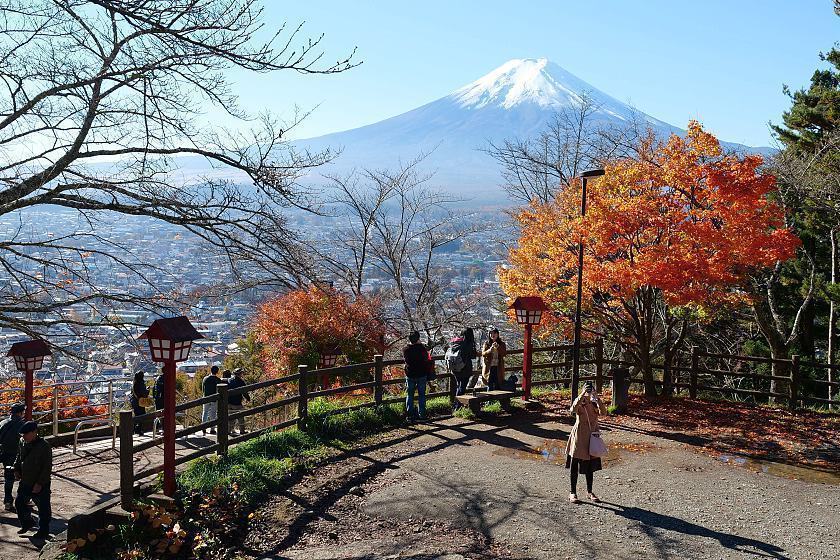
November is half over, and the autumn colors in the Tohoku region are coming to an end while at the same time starting to look their best in the Kanto and Kansai regions. Yesterday, Lori visited Tokyo and reported that the trees were starting to change. Similarly, Raina was in Kyoto this past Sunday where she found the leaves are progressing well and the city will likely be sporting its richest autumnal beauty towards the end of this month.
Exactly a week ago, Raina went to the Fuji Five Lakes region and confirmed that the trees were already displaying peak colors. Due to its higher elevation, the Fuji Five Lakes region tends to see its best viewing period from around late October through mid November. Today I returned to the area to see firsthand how far the season had progressed. Overall the trees had advanced past peak in most areas. The one exception was on the northern side of Lake Kawaguchiko where the maples were still looking fairly full and colorful. Even here, however, I predict conditions won't stay peak for more than another week at most.
Lake Yamanakako
The first place I explored was around Lake Yamanakako located to the east of Mount Fuji. I arrived around 7:30 in the morning and was glad I remembered a jacket because the temperature was around 1 degree Celsius (33 Fahrenheit). There was even frost on the ground near the shoreline.
At Yuyake no Nagisa Park on the south side of the lake, the trees that line the walking paths had lost over half their leaves, but the red carpet this created on the ground had its own appeal. Moving up to the Panorama Dai observation point, much of the forest between me and Fuji was also looking sparse. However the pampas grass in this area, and everywhere I went today, was still an attractive rich amber color. As I finished my loop of the lake, I parked briefly on the north shore at Nagaike Shinsui Park. During the height of autumn, the shrubbery in this small park turns a beautiful firey red. However, it was obvious that the season was almost finished as the bushes were mostly brown and losing their leaves.
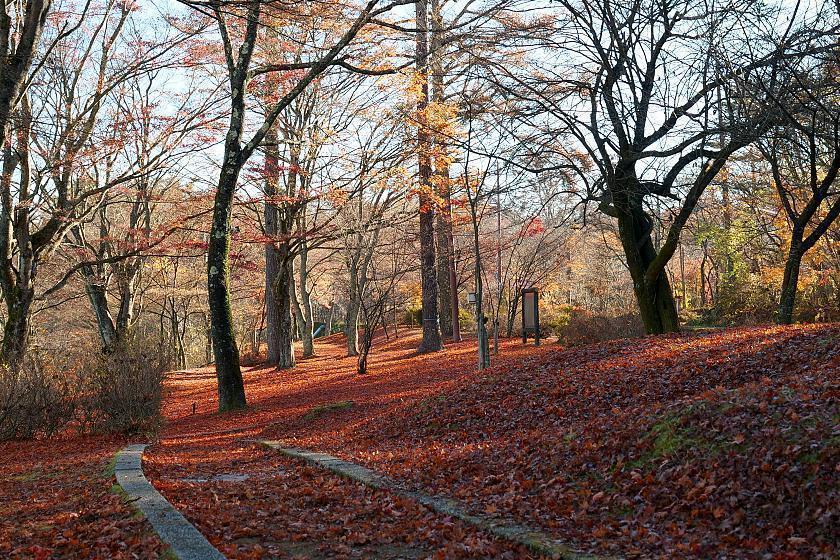
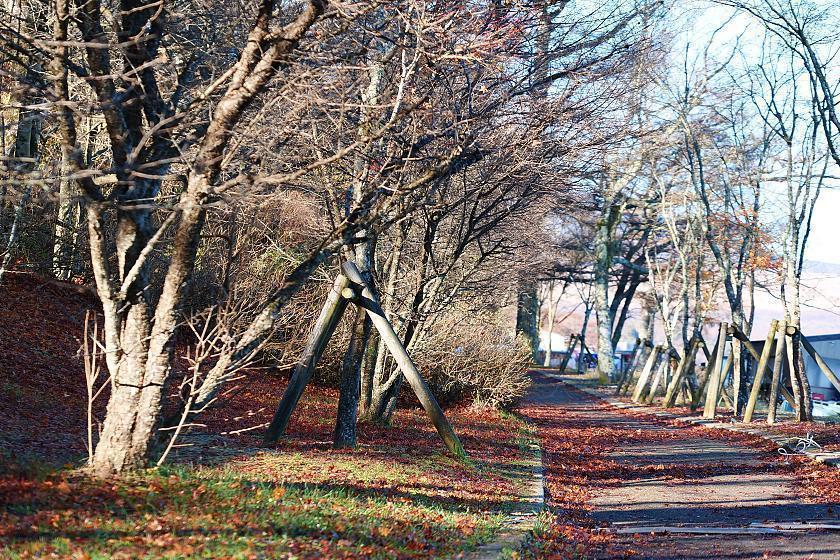


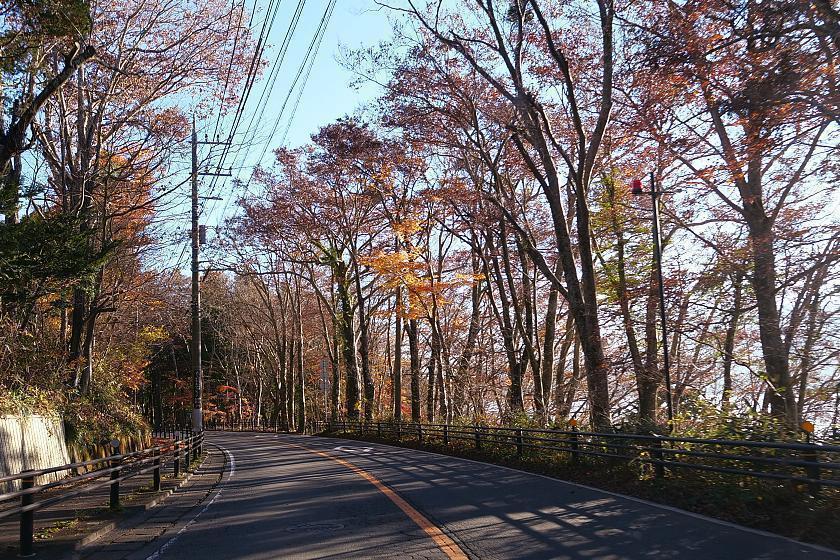
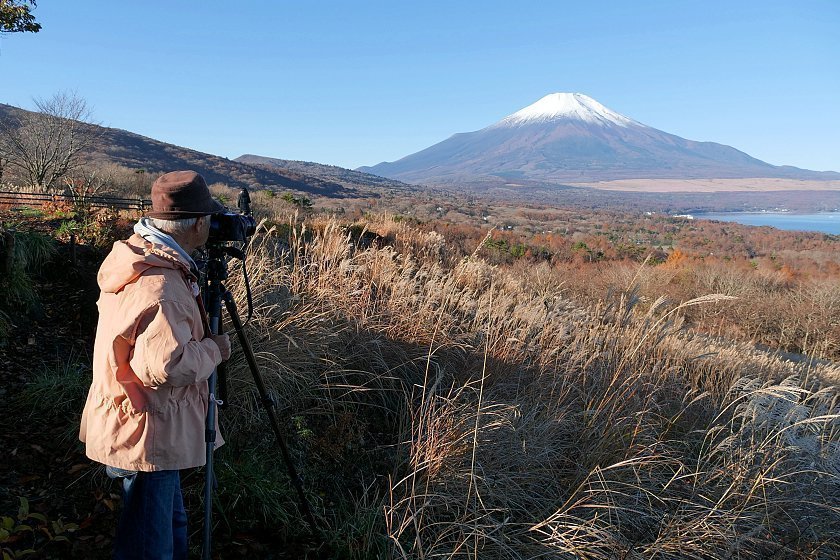
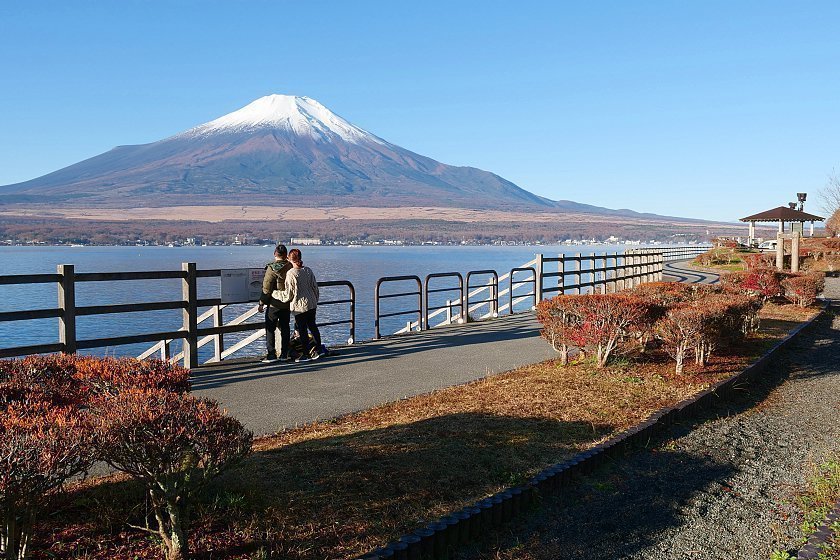
Chureito Pagoda
Next, I continued to circle the mountain in a counter-clockwise direction, arriving at the iconic Chureito Pagoda. Due to its slightly elevated mountainside location, I expected the fall colors to be completely finished here. Although the area is generally past peak, there were still several pleasant patches of color due to the variety of trees spread throughout the grounds. The maples along the staircase had many vibrant leaves. However, the cherry trees which surround the pagoda and side slope were completely leafless.
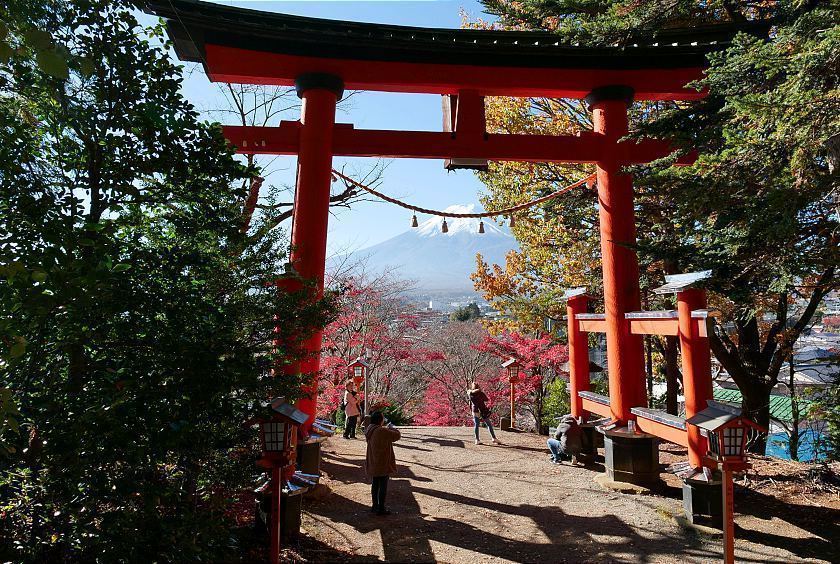
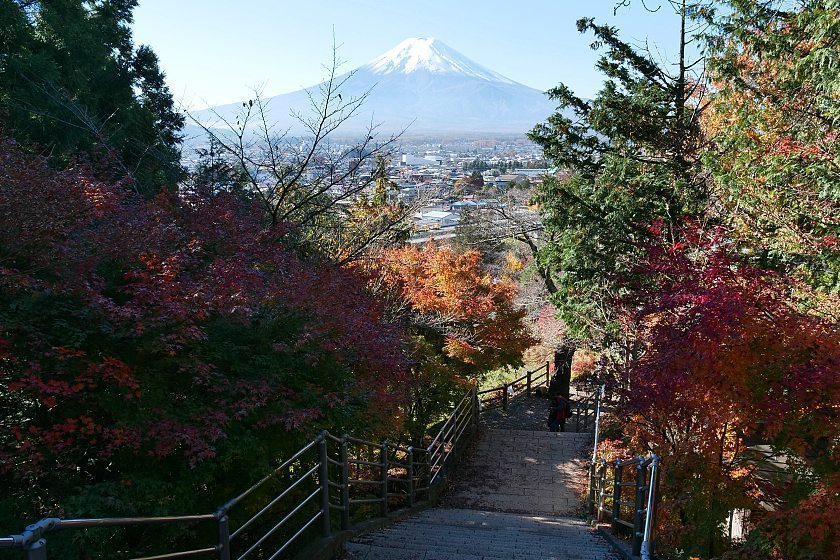

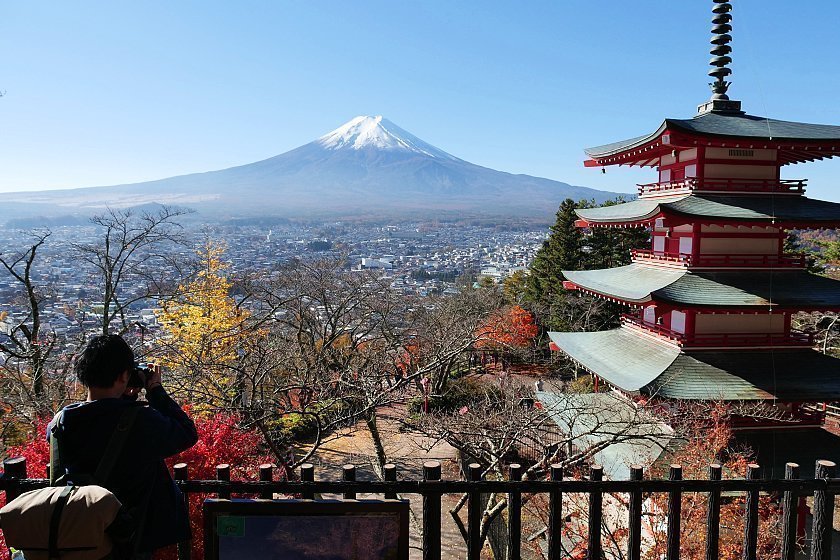
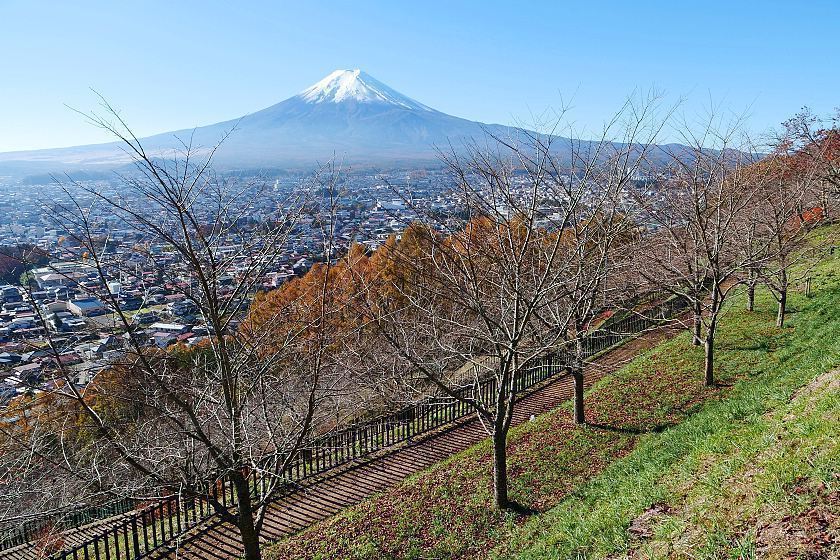
Lake Kawaguchiko
Lastly, I ended the day on the northern shores of Lake Kawaguchiko which had the best autumn colors of all the spots I visited. Along the coastal walking path, although the cherry trees were bare, the maple and few ginko trees still looked vibrant. At the Maple Corridor the crowds were thick but the foliage was nice, especially in the upper section around the bridge. The high volume of visitors is partially due to the fall festival which is currently being held until November 23 and includes a night illumination each evening until 22:00.
Continuing on, I arrived at my final stop for the day, the Maple Tunnel. This is a stretch of road along the coast lined by maples about three kilometers west of the Maple Corridor. Here, autumn was still going strong. The trees were almost completely full with colorful leaves. All in all, I would classify Lake Kawaguchiko to still be at peak, but I predict by the middle of next week viewing conditions will be less ideal. If you're planning a trip to the area, this weekend would be good time to come.
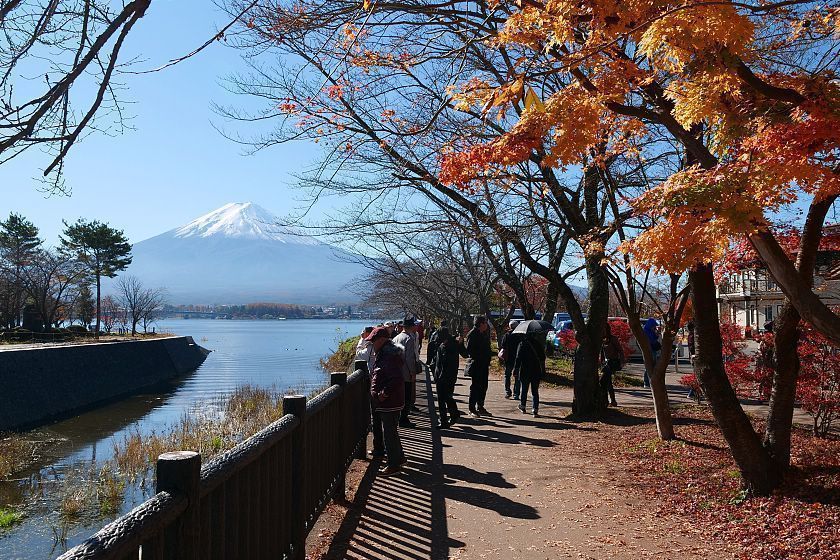
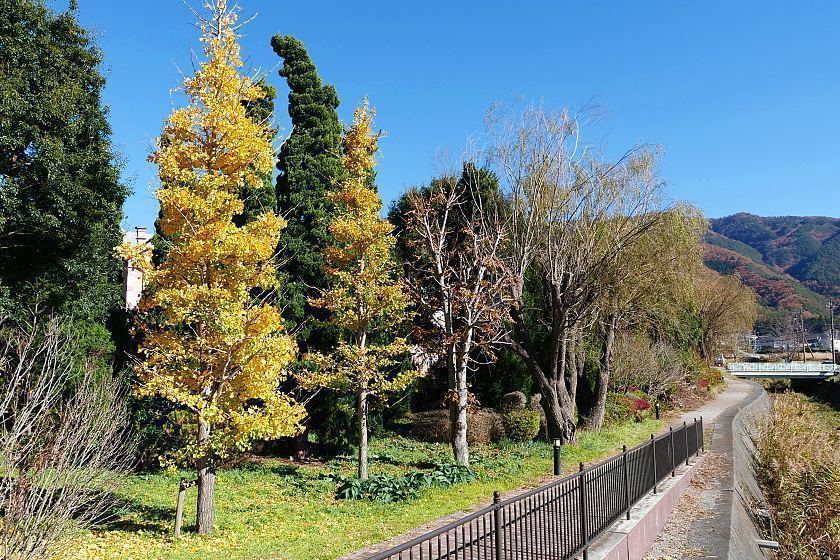
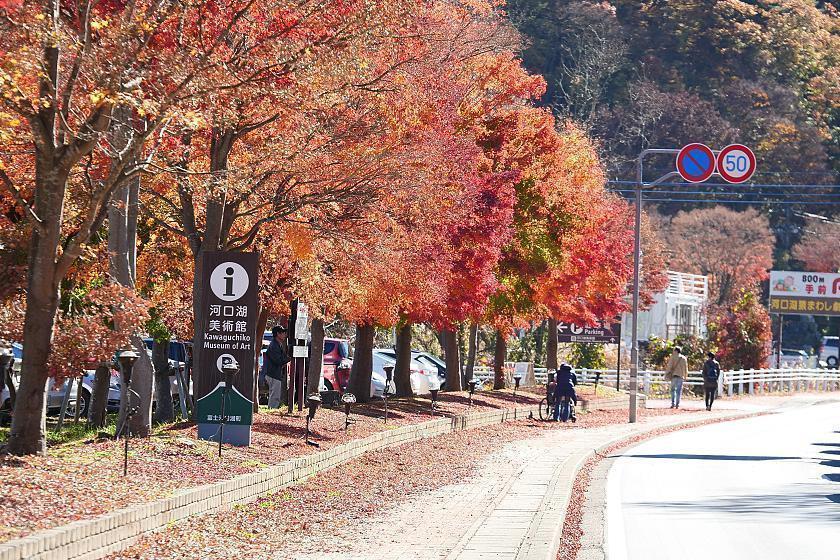
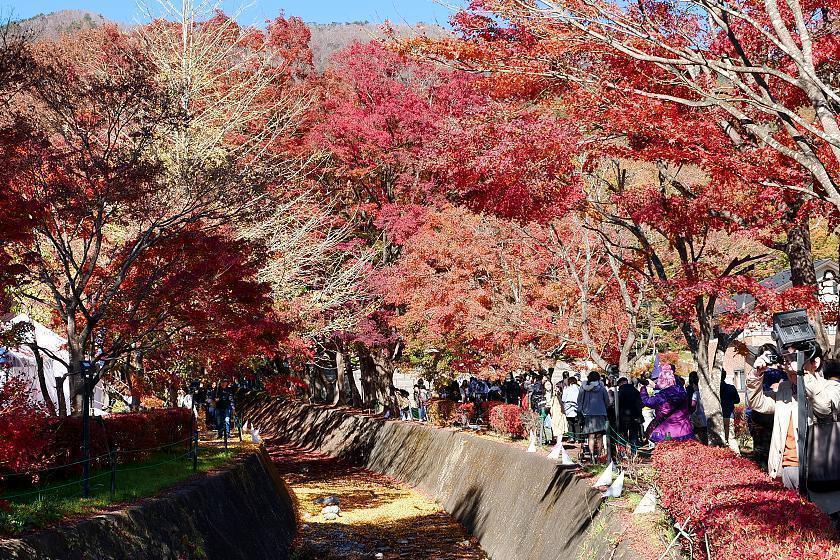
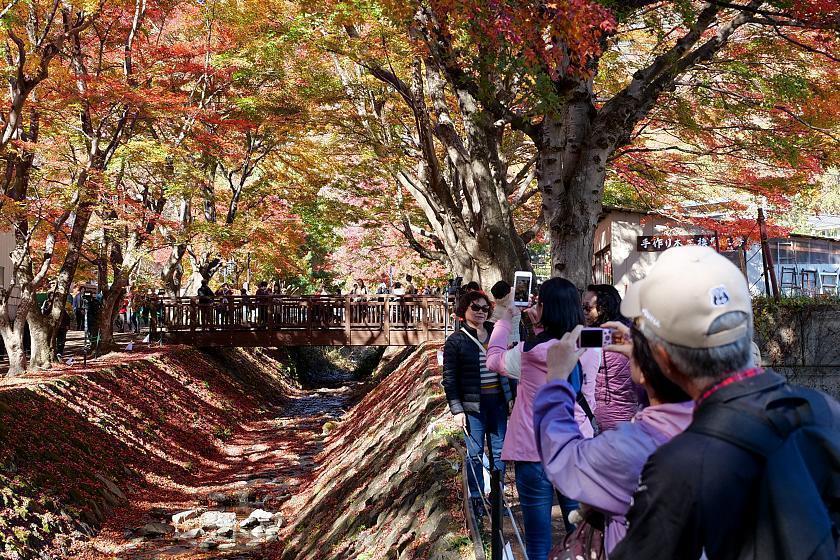
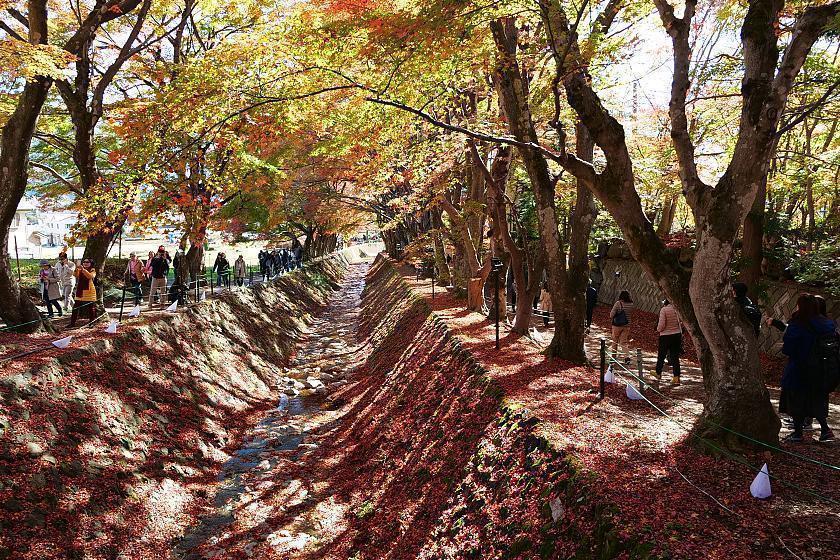
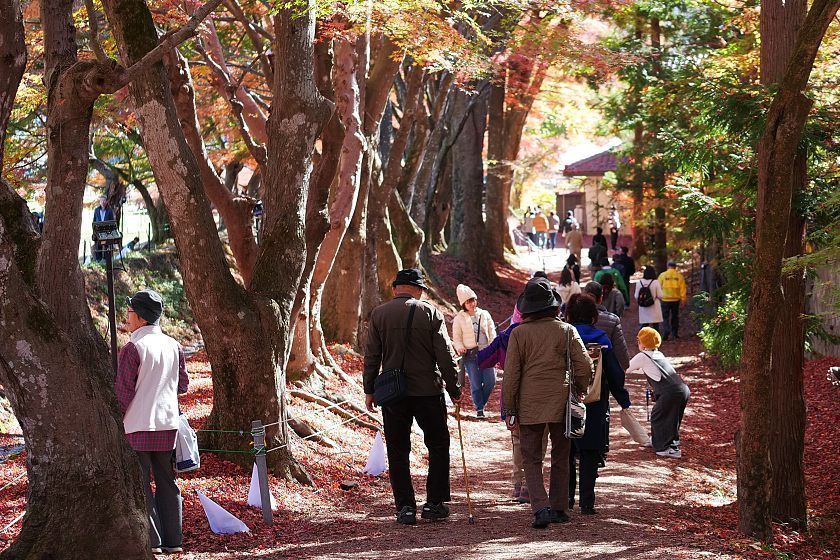
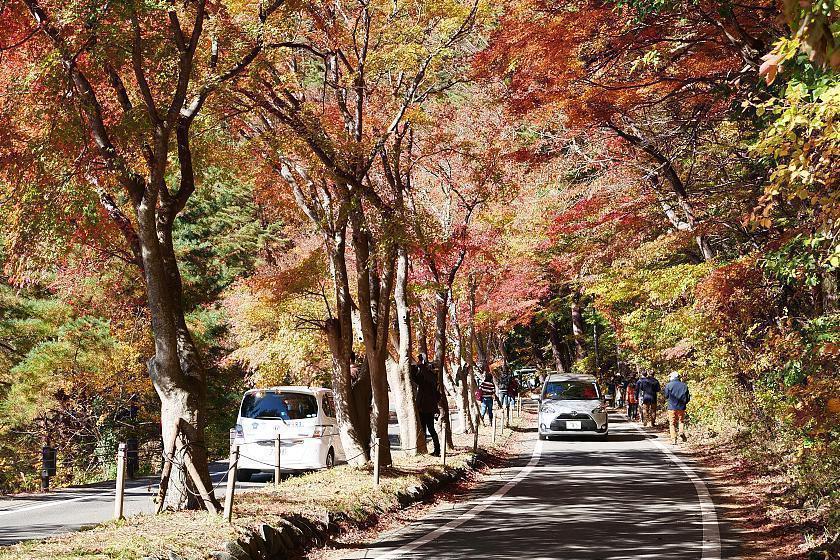

Questions? Ask in our forum.





